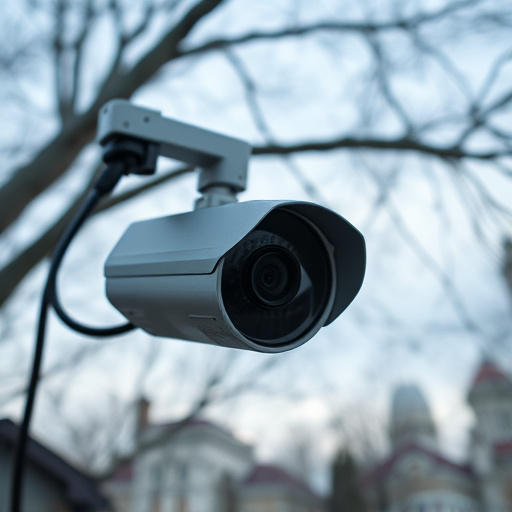Using hidden nanny cams with night vision requires strict adherence to legal boundaries and ethical considerations. Unauthorized installation is illegal; consent from all parties is crucial. Indoor uses infrared LED tech for clear images; outdoor applications demand enhanced low-light performance. Discreet placement, motion-activated features, and regular inspections help ensure optimal surveillance without compromising privacy. Strict regulations guide use to protect individual rights and maintain trust.
Uncover the art of identifying covert recording spots with our comprehensive guide. In today’s digital age, understanding the legal boundaries of covert recording is paramount, especially when it comes to hidden nanny cams and night vision technology. This guide navigates the intricate world of discreet placement strategies, detection techniques, and ethical considerations. Discover expert tips on choosing the right night vision tools and learn how to protect your privacy in a bustling world of hidden cameras.
- Understanding Legal Boundaries of Covert Recording
- Choosing the Right Night Vision Technology
- Discreet Placement Strategies for Nanny Cams
- Detecting and Preventing Hidden Cameras
- Ethical Considerations in covert surveillance
Understanding Legal Boundaries of Covert Recording
In the realm of covert recording, it’s crucial to understand and respect legal boundaries. The use of hidden nanny cams or any form of night vision surveillance equipment comes with stringent regulations that vary by jurisdiction. As a professional, it’s essential to note that unauthorized installation or use of such devices can lead to serious legal consequences, including charges for invasion of privacy. In today’s digital era, understanding the laws surrounding covert recording is more important than ever.
In terms of specific devices like hidden nanny cams equipped with night vision capabilities, remember that these tools should only be employed in situations where all parties involved are aware and consent to being recorded. This is particularly true in residential settings or places where expectations of privacy exist. Navigating these legal boundaries ensures that surveillance practices remain ethical and within the scope of acceptable use, fostering a harmonious balance between safety and privacy.
Choosing the Right Night Vision Technology
When selecting night vision technology for hidden nanny cams, understanding your specific needs is crucial. Different environments require varied levels of sensitivity and resolution. For instance, hidden nanny cams designed for indoor use might employ infrared LED technology to capture clear images in complete darkness, making them ideal for sleeping areas or playrooms. On the other hand, outdoor applications may demand enhanced low-light performance and wider field of view, suitable for monitoring entry points or vast gardens.
The latest night vision innovations include advanced image stabilization and long-range infrared capabilities, ensuring you capture crisp, detailed footage even in challenging conditions. Features like auto-switching between day and night modes, motion detection, and wireless connectivity further enhance usability. Remember, the right night vision technology will provide peace of mind, allowing you to monitor activities discreetly and effectively.
Discreet Placement Strategies for Nanny Cams
When deploying hidden nanny cams, discretion is key. Strategically placing these devices in areas that remain unobtrusive yet offer optimal viewing angles can significantly enhance their effectiveness. Common spots include strategic corners within rooms, behind furniture, or inside everyday objects like books or plants. Night vision capabilities further elevate these cameras’ utility, allowing for continuous surveillance even in low-light conditions.
To maximize covertness, consider the camera’s field of view and angle. Positioning them at eye level or slightly elevated ensures a wide capture area without drawing undue attention. Additionally, utilizing motion-activated features can help reduce power consumption and limit false alerts, making these hidden nanny cams versatile tools for continuous monitoring while maintaining privacy and security.
Detecting and Preventing Hidden Cameras
Detecting hidden cameras, often referred to as nanny cams with night vision capabilities, is a critical aspect of privacy protection. The first step in preventing their use is to be proactive and aware. Regular visual inspections, especially in areas like bedrooms, bathrooms, and offices where privacy is paramount, can help identify potential hidden devices. Using specialized tools like infrared cameras or metal detectors can also aid in detecting these covert recording devices, as many modern hidden cams are equipped with sensitive night vision capabilities.
Additionally, ensuring that all electrical outlets and hardware in walls are properly sealed and secured can deter would-be installers of such devices. Regularly updating security systems with advanced detection methods is another layer of protection. Many modern surveillance systems incorporate AI and motion sensors to alert users immediately if any unauthorized or hidden cameras are detected, making it easier to identify and remove them promptly.
Ethical Considerations in covert surveillance
The use of hidden nanny cams and night vision technology for covert recording raises significant ethical considerations that must be addressed with utmost care. While these tools can provide valuable insights in certain situations, such as ensuring child safety or managing staff performance, they also pose a grave threat to privacy. The very nature of covert surveillance invites distrust and can damage relationships, especially if not conducted within a clear legal framework.
In many jurisdictions, the placement of hidden cameras is subject to strict regulations, and consent plays a pivotal role. Unconsented recording, even for seemingly legitimate purposes, can lead to severe legal repercussions. Additionally, the potential for abuse is real; unauthorized use of such devices can result in severe breaches of trust and violate individual rights. Therefore, any use of night vision or hidden nanny cams should be accompanied by robust safeguards, including clear communication, transparent intentions, and adherence to local laws and privacy regulations.
In conclusion, while hidden nanny cams equipped with night vision technology can offer valuable peace of mind, it’s crucial to navigate the legal boundaries and ethical considerations surrounding covert recording. By understanding these aspects, choosing the right equipment, and employing discreet placement strategies, you can ensure effective monitoring while respecting privacy rights. Remember, knowledge is power – armed with this guide, you’re better equipped to protect your family and home from potential hidden threats.
